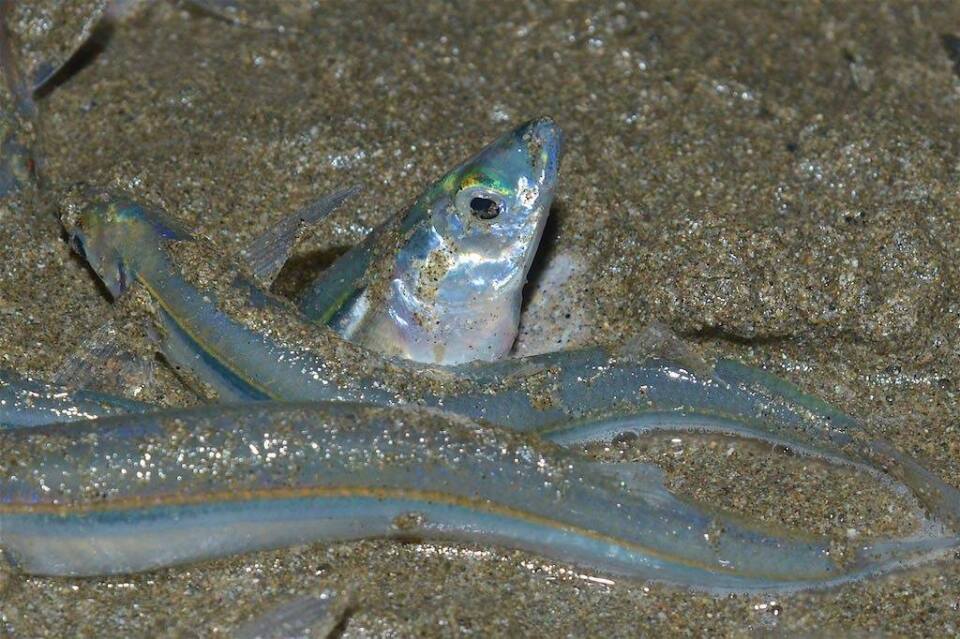Truth matters. Community matters. Your support makes both possible. LAist is one of the few places where news remains independent and free from political and corporate influence. Stand up for truth and for LAist. Make your year-end tax-deductible gift now.
It's Grunion Time. Why, Where And When These Small Fish Are 'Running' To Mate On California Beaches

Thousands of small, silvery fish flock to mate on California beaches each spring in a spectacle called the Grunion Run.
If you’re anything like me, you didn’t know what a grunion was before today. We’re about to change that.
What's a grunion?
Grunion are small, Southern California fish most famous for one thing: having sex on the beach. Every March to September, they can be spotted leaving the ocean in droves to spawn on the beach late at night. That’s known as the “grunion run.”

Why do they leave the water?
It’s all about keeping their babies safe. Grunion lay their eggs during the highest tide (which happens at night) so as the tide falls, they’re out of the water. That way, they’re safe to incubate under a little blanket of sand out of predators’ reach. Then, they hatch when the tides rise a couple weeks later.
Karen Martin is a biologist, professor emeritus of Pepperdine University, and leading grunion expert. She calls the grunion a “national treasure”:
“As you watch, more and more fish will start to appear," says Martin.
"Over time, the whole beach may be covered with fish if you’re lucky.”
Why you should see them now
We’re in “closed season” now until June, so fishing grunion is currently prohibited. That means it’s the best time to observe grunion, since the natural phenomena won’t be disturbed, Martin says.
“Open season” is in the summertime between July and August. But slow down before you take the grunion – Adults over 15 must have a marine fishing license, and there’s a 30 grunion per person limit.

Impacts of climate change
Warming temperatures on the beach endangers the health of grunion eggs, Martin says. Over the last two decades, they’ve begun populating in cooler Central Coast climates.
Where to see the grunion
You’re most likely to find grunion along the coast between Imperial Beach in San Diego to Point Conception in Santa Barbara, Martin says.
One of the best places to see a run in L.A. is Cabrillo Beach near the Los Angeles Harbor. The Cabrillo Beach Aquarium even offers guided tours. You might also see runs at Santa Monica, Malibu, Long Beach, and Hermosa beaches. Just don’t forget your flashlight!
Martin encourages observers to help keep track of grunion by reporting their observations here.
This schedule from the California Department of Fish and Wildlife predicts runs at Cabrillo Beach.










